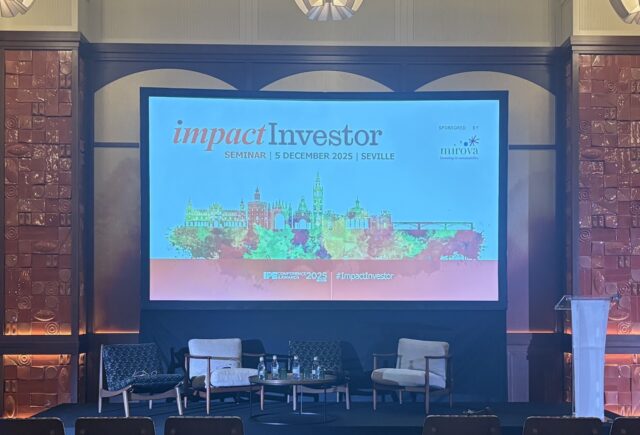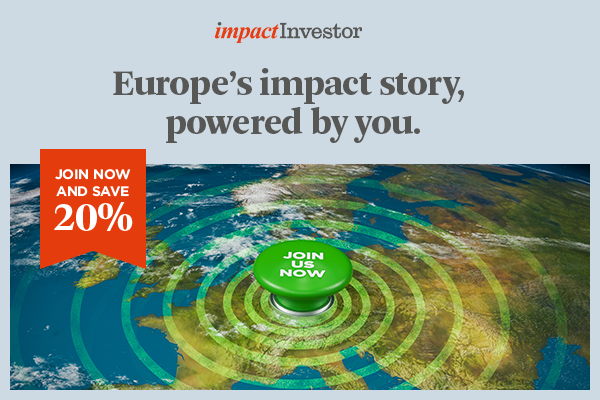Members of the impact investor community spoke to Impact Investor about whether the revised SFDR categories have brought structure to the sector, and shared what still concerns them.

The European impact investing community has welcomed the European Commission’s plan to update the Sustainable Finance Disclosure Regulation (SFDR) with a mix of relief and caution, with some corners of the industry calling for further refinement.
The Commission published its official proposal on 20 November. The revision aims to simplify the framework while creating clearer sustainability-related product categories, and to bring greater transparency to the sustainability claims made by fund managers and pension providers.
Now for the first time, the revised SFDR proposals have introduced a clear definition of impact investing and a dedicated product category for funds claiming to deliver real-world outcomes. To qualify, products must show a measurable positive contribution to environmental or social objectives, underpinned by a credible theory of change and evidence of actual impact rather than portfolio-level intent.
Speaking to Impact Investor after the proposal’s release, Laure Wessemius-Chibrac, CEO of the Netherlands Advisory Board on impact investing (NAB), said the move was overall a positive one. “There is an impact investing definition. For us that’s game-changing,” she said.
SFDR and impact
A central part of the proposal is the introduction of three product categories to replace the existing Article 8/9 framework: Transition, ESG Basics, and Sustainable. Each category comes with clearer criteria, minimum investment thresholds, and stricter exclusions, including for new fossil-fuel expansion.

Importantly, the proposal also reserves the term “impact” for financial products that explicitly pursue intentional and measurable positive environmental or social outcomes, in an effort to curb overstated or ambiguous claims.
Funds opting into the Transition or Sustainable categories will be required to report on sustainability indicators at product level. Entity-level PAI (principal adverse impacts) reporting, however, is removed under the new framework, shifting the emphasis onto fund-level disclosures. The specific indicators will be clarified at Level 2 – which will provide detailed technical standards that operationalise the new labelling regime – but will largely be selected by fund managers.
Across the market, this explicit recognition of impact investing is viewed as a step toward levelling the playing field, which has long been dominated by broader ESG products. Wessemius-Chibrac stressed that the formal inclusion of impact investing in EU regulation is likely to influence behaviour.
“Once something gets formulated into regulation, it gets more attention. Which means we’re making it to the playground with the big kids,” she added.
Impact flows
Capital flows are also expected to respond to the revised SFDR structure. Wessemius-Chibrac argues that clearer terminology removes a long-standing excuse to avoid impact. “Very often an excuse not to invest in impact is that the definitions are not clear, but now they are,” she said.
The improved clarity could even trigger a degree of “fear of missing out” among mainstream managers once competitors begin adopting the impact label, she added.
Structural concerns
While the revisions have been broadly welcomed, several structural concerns remain. One relates to PAI reporting. Although entity-level PAI statements are removed, product-level PAIs continue to apply for Transition (Article 7) and Sustainable (Article 9) funds. Concerns have been raised that allowing managers discretion over which indicators to report on could “open the door for a lot of harm,” Wessemius-Chibrac warned, weakening safeguards against negative externalities, particularly in transition-finance strategies that may still carry meaningful social or environmental risks.
Another point of discussion relates to alternative investment funds (AIFs). Many impact funds fall under the AIF category, and earlier drafts of the reform had floated the idea of a professional investor opt-out. While this opt-out does not appear in the final Commission proposal, some stakeholders remain concerned that the treatment of AIFs could still create uneven application across the impact-investing universe.
United for Impact, a coalition of 68 impact-investment funds across 19 European countries, together with Impact Europe, also welcomed the Commission’s approach, having long advocated for a dedicated impact category.
“At a time of collective setbacks, the European Commission’s proposal on the SFDR charts a clear ambition. This review has the potential to unlock substantial private capital for the transition, and impact investors will play their part,” said Servane Metzger-Corrigou, coordinator of United for Impact and chief impact officer at Ring Capital.
Jana Bour, director of policy & advocacy at Impact Europe, urged investors and industry associations to unite behind the emerging standard.
“Alignment is our greatest asset: the more aligned we are behind the Commission’s proposal, the faster capital can move into the solutions Europe urgently needs,” Bour said.
Looking ahead
For Wessemius-Chibrac, the Commission’s work is a “good first step,” while adding that Europe will still need to “go back to the drawing table again.”
Commenting on the Commission’s vision for the law, Heike Schmitz, co-head of ESG at Herbert Smith Freehills Kramer, welcomed the proposed changes.
“Finally, impact investing has found its place, being recognised for the first time as a distinct strategy, no longer to be confused with thematic sustainable or transition investing.”
As the sector now enters a period of scrutiny and negotiation, there is broad agreement that the revision marks genuine progress. But ultimately, the details, particularly around indicators, thresholds and implementation timelines, will determine whether SFDR accelerates or hinders the growth of Europe’s impact investing sector.






